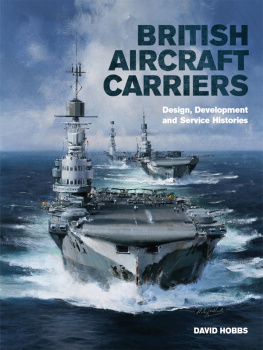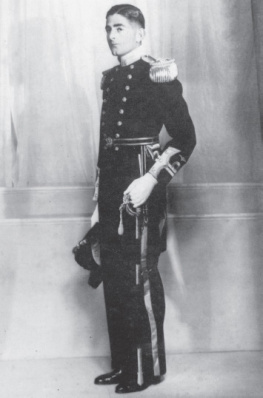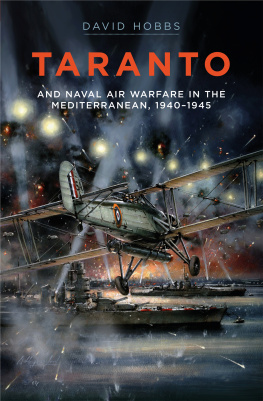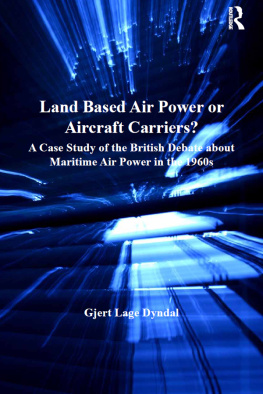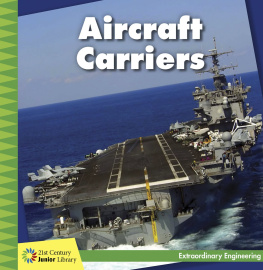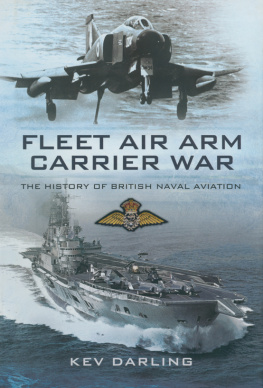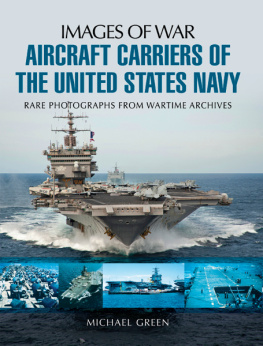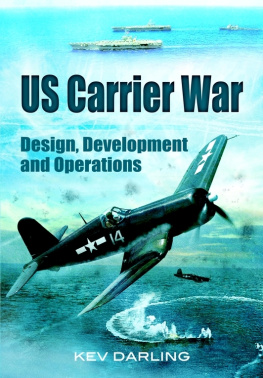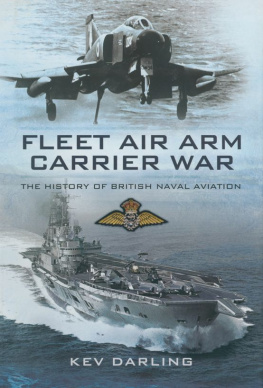David Hobbs - British Aircraft Carriers
Here you can read online David Hobbs - British Aircraft Carriers full text of the book (entire story) in english for free. Download pdf and epub, get meaning, cover and reviews about this ebook. year: 2015, publisher: Pen & Sword Books Ltd, genre: History. Description of the work, (preface) as well as reviews are available. Best literature library LitArk.com created for fans of good reading and offers a wide selection of genres:
Romance novel
Science fiction
Adventure
Detective
Science
History
Home and family
Prose
Art
Politics
Computer
Non-fiction
Religion
Business
Children
Humor
Choose a favorite category and find really read worthwhile books. Enjoy immersion in the world of imagination, feel the emotions of the characters or learn something new for yourself, make an fascinating discovery.
- Book:British Aircraft Carriers
- Author:
- Publisher:Pen & Sword Books Ltd
- Genre:
- Year:2015
- Rating:4 / 5
- Favourites:Add to favourites
- Your mark:
- 80
- 1
- 2
- 3
- 4
- 5
British Aircraft Carriers: summary, description and annotation
We offer to read an annotation, description, summary or preface (depends on what the author of the book "British Aircraft Carriers" wrote himself). If you haven't found the necessary information about the book — write in the comments, we will try to find it.
British Aircraft Carriers — read online for free the complete book (whole text) full work
Below is the text of the book, divided by pages. System saving the place of the last page read, allows you to conveniently read the book "British Aircraft Carriers" online for free, without having to search again every time where you left off. Put a bookmark, and you can go to the page where you finished reading at any time.
Font size:
Interval:
Bookmark:

BRITISH
AIRCRAFT
CARRIERS

BRITISH
AIRCRAFT
CARRIERS
Design, Development
and Service Histories
DAVID HOBBS

Copyright David Hobbs 2013
First published in Great Britain in 2013 by
Seaforth Publishing
An imprint of Pen & Sword Books Ltd
47 Church Street, Barnsley
S Yorkshire S70 2AS
www.seaforthpublishing.com
Email info@seaforthpublishing.com
British Library Cataloguing in Publication Data
A CIP data record for this book is available from the British Library
ISBN 978 1 84832 138 0
All rights reserved. No part of this publication may be reproduced or transmitted in any form or by any means, electronic or mechanical, including photocopying, recording, or any information storage and retrieval system, without prior permission in writing of both the copyright owner and the above publisher.
The right of David Hobbs to be identified as the author of this work has been asserted in accordance with the Copyright, Designs and Patents Act 1988
Typeset and designed by Neil Sayer
Printed in China through Printworks International Ltd.
This book has taken me some years to compile and, as always, I have relied on the support of my wife, Jandy, who encouraged and helped me with both research and collation and on my son Andrew who maintains his unfailing interest in my writings.
I would like to thank Jeremy Michel and Andrew Choong of the Historic Photographs & Ship Plans Department of the National Maritime Museum at the Brass Foundry in Woolwich who gave me access to the many ship's covers and drew my attention to the 'as-fitted' drawings reproduced in this book. Jennie Wraight, the Admiralty Librarian, has given me valuable assistance over the years as have Christopher Page, Steven Prince, Jock Gardner, Malcolm Llewellyn-Jones and Mike MacAloon and, of course, the late David Brown at the Naval Historical Branch. David Stevens, Director of Strategic and Historical Studies at the Sea Power Centre Australia gave valuable help and information about the RAN and John Perryman helped with information and photographs. Joe Straczek helped with details of RN carrier movements in Australia and the Far East after 1945 and Terry Hetherington, Manager of the Fleet Air Arm Museum at RANAS Nowra, helped with the search for photographs. Mark Schweikert also helped me in my search for images. Michael Whitby, Chief of the Canadian Naval History Team at National Defence Headquarters in Ottawa gave information about the Canadian Fleet Air Arm. I would especially like to thank my friend Norman Friedman for the insight and understanding of world naval aviation that he has brought to our discussions at international conferences over the years; I value his opinions and encyclopaedic knowledge greatly.
A book like this requires considerable archival research and I would also like to thank Joe Kelly and other staff at the National Archives at Kew and the staff at the MOD Records Department who helped me when it was sited at Hayes. While I was Curator of the Fleet Air Arm Museum at Yeovilton I was able to carry out research in its extensive archive and I would like to thank staff there including Jan Keohane, Catherine Cooper, Jerry Shore, the late Len Lovell and the late Dennis White for their help and support.
I have gathered a large photographic archive of my own over many years and I have used it to illustrate a number of the carriers in this book but I found that there were significant gaps. Several people volunteered to help fill this deficiency and among them I would like to thank A D Baker III in the USA. I am also grateful to Steve Bush in the UK who was able to add images from the Ferrers-Walker collection to his own and make them available. My friends at the Crail Museum, Sue Bradman and Anne Mayes were also most helpful in providing images from the Museum archive. John Jordan and Ian Sturton helped with drawings at short notice and Conrad Waters also provided me with assistance. I have used a number of images which were made available by the US Navy and the Royal Australian Navy.
This publication contains Public Sector information licensed under the Open Government Licence v 1.0 in the UK.
Numerous other people have helped over the past few years by contributing data on equipment, tactics and technique that helped to shape the book; they are too numerous to name but I thank them all. Any errors that come to light are, however, my own responsibility. As always, I am grateful to Rob Gardiner and Seaforth Publishing for giving me the opportunity to publish this book which is the result of many years of research.
David Hobbs
This book describes the development of aircraft carriers by the Royal Navy, from the first experiments in 1911 with aircraft that could operate from ships to the present day. It includes the early experimental vessels to show the line of development, and goes on to include all those ships which had the operation of aircraft as their primary purpose. It does not include battleships, cruisers, destroyers, frigates and fleet auxiliaries, many of which operated small numbers of aircraft as one among many purposes throughout the same period. The dividing line can become blurred, however, and details of fighter catapult ships are included, together with MAC-Ships, although the operation of aircraft from the latter was arguably secondary to their primary purpose as grain ships or tankers. I considered it important that they could be compared with British-built escort carriers.
With the exception of the Invincible and Queen Elizabeth classes and the commando helicopter carrier Ocean, all the ships covered were designed and built to Imperial measurements, and I have used these throughout to avoid the possibility of errors in translation. That said, I have used Imperial units for the three classes mentioned above so that they can more easily be compared with the earlier vessels, and to give a consistent form of measurement throughout. Where distances are referred to in miles, they are nautical miles, which are an exact distance of 6,080ft but usually taken as being 2,000 yards in any but the most precise navigational calculation. Gallons are given in Imperial measure, and American readers should note that one US gallon is the equivalent of 0.833 Imperial gallons.
The book is divided into chapters which contain details of British aircraft carriers by class, comparisons with foreign carriers at various stages of development, and descriptions of naval aircraft and their impact on ship design. After the Second World War the Australian, Canadian and, to an extent, Indian navies worked in close concert with the RN from which they had evolved and operated aircraft carriers of British design and construction that were either purchased outright or lent from the United Kingdom. They are, therefore, included in the chapters with their RN sister ships. Later ships have been purchased from other nations, operate less intimately with the RN and have therefore been allocated a chapter of their own. Each chapter covering an aircraft carrier class has a technical description of the design, drawings, photographs and an individual history of every ship in the class.
Unlike my previous books, in this one I have not used endnotes. In an encyclopdic work of this nature virtually every sentence would have required an endnote giving the source or some other amplification, and this would have proved impossible. The extensive bibliography gives sources and references for the data, facts and figures I have used, which were sourced both from published and unpublished documents. Amplification, where necessary, has been worked into the text, and I am responsible for any errors or omissions.
Next pageFont size:
Interval:
Bookmark:
Similar books «British Aircraft Carriers»
Look at similar books to British Aircraft Carriers. We have selected literature similar in name and meaning in the hope of providing readers with more options to find new, interesting, not yet read works.
Discussion, reviews of the book British Aircraft Carriers and just readers' own opinions. Leave your comments, write what you think about the work, its meaning or the main characters. Specify what exactly you liked and what you didn't like, and why you think so.

